#Hunkpapa Lakota
Explore tagged Tumblr posts
Text

Chief Sitting Bull. Hunkpapa Lakota ... Late 1800s ... Photo by F. A. Rinehart
13 notes
·
View notes
Text
On Dec 15th, we venerate Elevated Ancestor & Saint Tataηka Íyotake aka Chief Sitting Bull on the 133rd anniversary of his passing 🕊 [for our Hoodoos of First Nations descent]

Sitting Bull, of the Hunkpapa Lakota, was a fierce political leader & holy man known to be a great father, husband, & friend to all. Under him, all the Lakota bands united for survival in the Northern Plains, as he spearheaded their resistance against European invasion. He was known for his legendary courage, unyielding defiance toward U.S. military power, & contemptuous of the many broken U.S. political promises.
Tatáŋka Íyotake was born to a prominent family of chiefs on the Grand River in present-day South Dakota at a place called, "Many Caches" - known for its abundant food storage pits. He was given his name, which described a buffalo bull sitting intractably on his haunches. This, he would grow live up to.
As a young man, Tatáŋka Íyotake joined two prominent groups within his community. He became a distinguished member of the Silent Eaters (a group concerned with tribal welfare) & leader of the Strong Heart Warrior Society. At 14, he joined his father & uncles on a raid against the Crow. Here, he first encountered White soldiers as the U.S. Army had mounted a broad campaign in retaliation for the Santee Rebellion in Minnesota, enchanting the Lakota had no affiliation with. That following year, in 1816, Tatáŋka Íyotake fought U.S. troops again at the Battle of Killdeer Mountain. Later, in 1865, he led a siege against the newly established Fort Rice in North Dakota. Widely respected for his bravery & insight, in 1868, Tatáŋka Íyotake became Head Chief of Lakota Nation.
By 1874, the stage for war between Sitting Bull & the US Army was set once an expedition led by General George Armstrong Custer confirmed gold had been discovered in the Dakota Territory’s the Black Hills, an area sacred to the Lakota bands. This land was decreed off-limits to white settlement by the Fort Laramie Treaty of 1868. Despite this ban, prospectors began a rush to the Black Hills. Once U.S. government efforts to purchase the Black Hills failed, the Fort Laramie Treaty was dismissed. The commissioner of Indian Affairs decreed that all Lakota not settled on reservations by January 31, 1876, would be considered hostile.
Rightfully so, Sitting Bull and his people held their ground. In March, 3 lines of federal troops invaded the area. Sitting Bull summoned the Lakota and their allies, the Cheyenne, & Arapaho to his camp on Rosebud Creek in Montana Territory. There, he led them in the sundance ritual, offering prayers to Wakáŋ Táŋka (Great Spirit). Sitting Bull slashed his arms 100 times in sacrifice for his people. During this ceremony, he shared that he'd had a vision. He saw soldiers falling into the Lakota camp like grasshoppers falling from the sky.
Inspired by this vision, the Oglala Lakota leader, War Chief Crazy Horse, set out for battle with a band of 500 warriors at the Battle of the Rosebud. To celebrate this victory, the Lakota moved their camp to the valley of the Little Bighorn River. They were joined by 3,000 more Native warriors who had abandoned the reservations to follow Sitting Bull.
On June 25th, the U.S. 7th Cavalry launched their attack under George Armstrong Custer. They rushed the Indian encampment as if in fulfillment of Sitting Bull’s vision. Yet they were severely outnumbered & thus defeated. White outrage at this military catastrophe spurred thousands more cavalrymen to the area. Over the next year, they relentlessly pursued the Lakota bands.
Though many were forced into surrender, Sitting Bull remained defiant. In May 1877, he led his band to Canada, beyond the reach of the U.S. Army. When a U.S. General traveled north to audaciously offer him a pardon in exchange for settling on a reservation, Sitting Bull angrily dismissed him.
Four years later, in the wake of European invaders driving the Buffalo to near instinction, Sitting Bull found it nearly impossible to feed his people. So, he moved south to face surrender. On July 19, 1881, Sitting Bull’s young son handed his father’s rifle to the U.S. commanding officer of Fort Buford in Montana. Through this action, Sitting Bull hoped to teach his son “that he had become a friend of the Americans.” He also said, “I wish it to be remembered that I was the last man of my tribe to surrender my rifle.” He asked for the right to cross back & forth into Canada whenever he wished & for a reservation of his own on the Little Missouri River near the Black Hills. Instead, he was sent to Standing Rock Reservation. His warm reception there raised Army fears about a fresh uprising. So, Sitting Bull and his people were taken further down the Missouri River to Fort Randall. They were held as prisoners of war for nearly 2 more years.
Finally, on May 10, 1883, Sitting Bull rejoined his tribe at Standing Rock. The Indian Agent in charge of the reservation was determined to deny him any special privileges. And so, Sitting Bull was forced to work in the plantation fields. Yet when a delegation of U.S. Senators came to discuss opening part of the reservation to Whitea, he spoke forcefully, though futilely, against it.
In 1885, Sitting Bull was allowed to leave the reservation to join Buffalo Bill’s Wild West Show. He earned $50 a week for riding once around the arena. Sitting Bull also named his price for his autograph & picture. Unable to tolerate White society any longer, he stayed with the show for 4 months.
Returning to Standing Rock, Sitting Bull lived in a cabin near his birthplace on the Grand River; still rejecting the seeds of the colonialism - Christianity & giving up the traditional ways of life - as the reservation’s rules required. He did, however, send his children to a Christian school because he believed the next generation of Lakota would need the education of their oppressors to survive in the new world.
Here, he had another vision. He saw a meadowlark on a hillock beside him say,“Your own people, Lakotas, will kill you.” Nearly 5 years later, this vision would come to fruition.
In the fall of 1890, a Minŋecoŋjou Lakota named Kicking Bear came to Sitting Bull with news of the Ghost Dance, a ceremony that promised to rid the land of colonizers & restore the Indian way of life. Lakota had already adopted the ceremony at the Pine Ridge & Rosebud Reservations, and Indian Agents there had already called for troops to bring the growing movement under control.
At Standing Rock, the authorities feared Sitting Bull, still revered as a powerful spiritual leader, would join the Ghost Dancers as well. They sent 43 Lakota police officers to seize him. Before dawn on December 15th1890, the officers burst into Sitting Bull’s cabin & dragged him outside, where his followers were gathering to protect him. In the gunfight that followed, one of the Lakota police officers shot Sitting Bull in the head.
Today, Sitting Bull rests close to his birthplace near Mobridge, South Dakota. A granite shaft marks his grave.
"They claim this mother of ours, the Earth, for their own use, and fence their neighbors away from her, and deface her with their buildings and their refuse." - Sitting Bull.
We pour libations & give him💐 today as we celebrate him for his inspirational leadership, fearless figuring spirit, power in prayer, & his deep faith in Great Spirit.
Offering suggestions: a smoking pipe with tobacco, Lakota music, bison meat served with wild potatoes & prairie turnips
‼️Note: offering suggestions are just that & strictly for veneration purposes only. Never attempt to conjure up any spirit or entity without proper divination/Mediumship counsel.‼️
#hoodoo#hoodoos#atr#the hoodoo calendar#ancestor veneration#elevated ancestors#Sitting bull#Lakota Nation#Plains Indians#First Nations#Hunkpapa Lakota
42 notes
·
View notes
Text

Repost @chaseironeyes via @lakotalaw
Dec. 15, 1890
"After the Battle of the Little Bighorn, Sitting Bull & his people fled to “Canada” for four years. Faced with mass starvation among his people, Sitting Bull finally returned to the “United States” & surrendered in 1883. Sitting Bull was assigned to the “Standing Rock reservation” in present-day Dakotas”,where he maintained considerable power despite best efforts of the Indian agents & jealous Lakota to undermine his influence. When the apocalyptic spiritual revival movement known as the Ghost Dance began to grow in popularity among the Sioux in 1890, Indian agents feared it might lead to a Native American uprising. Wrongly believing that Sitting Bull was the driving force behind the Ghost Dance, agent James McLaughlin sent Indian police to arrest the chief. The police rousted Sitting Bull from his bed at 6:00 in the morning, hoping to spirit him away before his guards and neighbors knew what had happened. When the fifty-nine-year-old chief refused to go quietly, a crowd gathered and a few young men threatened the Indian police. Someone fired a shot that hit one of the Indian police; they retaliated by shooting Sitting Bull in the chest and head, killing him instantly. Before the ensuing gunfight ended, twelve other Native Americans were dead and three were wounded. Sitting Bull & Crazy Horse we’re not in the majority. The majority were forced to succumb to the status of “federal Indian” & confine themselves to “federal Indian reservations.” The minority was at Greasy Grass, a very small minority would not surrender in the torturous aftermath fleeing to so called “Canada” ; Starving so bad they ate mice; gnawed on their own moccasins to mimic the sensation of nourishment, watching their children slowly perish. Similarly & again a fraction of those minorities engaged the GhostDance. Two weeks later, the army suppressed the Ghost Dance movement with the Wounded Knee Massacre 1890. The spirit of tribal sovereignty that guided Sitting Bull still smolders under foreign occupation. The same corporate oppression faces all “Americans” today. “I was never the aggressor; I only fought to defend the women & children.” - Sitting Bull
#Tȟatȟáŋka Íyotake#sitting bull#hunkpapa lakota#lakota#native american#indigenous american#american history#19th century#north dakota
10 notes
·
View notes
Text

1 note
·
View note
Text
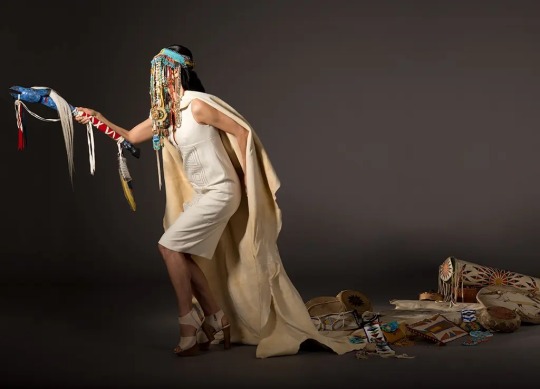
Cultural Belongings - 2016
Dana Claxton (Hunkpapa Lakota)
35 notes
·
View notes
Text

#Crow Eagle#Fool Thunder#Iron Thunder#and Slow White Buffalo- Leaders of the Hunkpapa Lakota. Photo by D.F. Barry#1881.#lutolateehee#oldschool
45 notes
·
View notes
Text
Sitting Bull and the Show Business
November is Native American History Month; next year (2025) will mark the 350th anniversary of King Phillip’s War, the beginning of the end for the native people as the dominant polity on this continent. I’m marking the occasion with a series of daily posts related to the history of the Native Americans and their interactions with encroaching Europeans. Some will have to do with pop culture;…
1 note
·
View note
Text

This is all I have to say about the election
THIS IS NOT YOUR LAND
0 notes
Text
"Native Americans across Indian Country shared mixed emotions this week after President Biden apologized for the U.S. government’s role in running Native American boarding schools across the country.
During the 150-year practice, at more than 400 schools where the U.S. partnered with various religious institutions, Indigenous children were separated from their families and stripped of their language and customs in an effort to assimilate into white culture. There were also documented cases of abuse and death.
Secretary of the Interior Deb Haaland, who is a member of the Laguna Pueblo tribe and has been instrumental in bringing these issues to a wider audience through her Federal Indian Boarding School Initiative, applauded Biden’s move.
“I'm so grateful to [Biden] for acknowledging this terrible era of our nation's past,” Haaland, whose grandparents were taken to boarding schools, posted on X.
ederal Indian boarding schools have impacted every Indigenous person I know. These were places where children - including my grandparents - were traumatized. I'm so grateful to @POTUS for acknowledging this terrible era of our nation's past.
“I would never have guessed in a million years that something like this would happen,” she told the Associated Press.
At the Gila Crossing Community School near Phoenix, Biden celebrated Haaland’s historic role and apologized today for America’s “sin.”
“It’s an honor, a genuine honor … to right a wrong, to chart a new path,” he said. “I formally apologize as president of the United States of America for what we did. I formally apologize. It’s long overdue.”
However, Indigenous leaders and citizens across the country stressed that this is only the first step.
“This is one of the most historic days in the history of Indian Country, and an apology of this size must be followed by real action,” Nick Tilsen, who belongs to the Oglala Lakota Nation and is president and CEO of the Indigenous rights organization NDN Collective, told Yahoo News.
Tilsen believes that there are specific, actionable steps that need to accompany any apology. For him, that means passing the U.S. Truth and Healing Commission bill in Congress, rescinding medals of honor for those who participated in the Battle of Wounded Knee, releasing “longest living Indigenous political prisoner in American history Leonard Peltier, who is also a boarding school survivor” and “unprecedented investment in Indigenous languages and education.”
Principal Chief of the Cherokee Nation Chuck Hoskin celebrated the move, calling out Haaland’s role in particular, and echoed the sentiment of following any apology with action.
“The [Department of the Interior’s] recommendations, especially in the preservation of Native languages and the repatriation of ancestors and cultural items, can be a path toward true healing,” Hoskin said in a statement.
While many Indigenous leaders are calling for action, Tilsen stressed that this is also a time to hold boarding school survivors and their families close.
“At this moment in history, we have to remember many of the survivors of the boarding schools are still alive,” he said. “It's in every household and it's in every community. And it's directly tied to the struggles that our people have today.”
Dylan Rose Goodwill, who is Diné (Navajo), Hunkpapa Lakota and Sisseton Wahpeton Dakota, was visiting Sherman Indian High School in Riverside, Calif., on Thursday when she heard the news about Biden’s forthcoming apology. It’s a place that is part of her family history, as her grandmother (or másáni) was sent there when it served as a federally run Native boarding school.
She told Yahoo News that hearing the news there was “complicated.”
As the senior assistant director of undergraduate admissions at the University of Southern California, Goodwill was visiting the school as a college recruiter.
“I've always had these kinds of mixed feelings because it's been weird to be the admission counselor for the schools that my own grandparents attended,” she said.
“It was already a tough morning to go and then to receive the news on site was really a mixture of feelings because I felt anger mostly, where it was like disbelief that this was happening, excitement that at least it was happening, but also feeling like this isn't enough,” Goodwill added.
Sitting where her grandmother sat in the 1930s and '40s, Goodwill asked herself, “What is that gonna really hold for her now? She passed in '04.”
Biden’s statement comes 16 years after former Canadian Prime Minister Stephen Harper apologized for Canada’s role in the Indigenous residential school system — a topic filmmakers Julian Brave NoiseCat and Emily Kassie document in their film Sugarcane, about St. Joseph’s Mission School near the Sugarcane reserve in British Columbia.
NoiseCat is a member of the Canim Lake Band Tsq’escen and a descendant of the Lil’wat Nation of Mount Currie and whose grandmother attended the Catholic Church-run residential school and gave birth to his father there. He told Yahoo News that this moment was important for a “continentwide conversation about what happened to Native families and Native children at Native American boarding schools and Indian residential schools.”
Joining Biden and Haaland for the event on the Gila River Indian Reservation along with Kassie, NoiseCat continued, “The fact that the president has chosen to formally apologize to survivors and their families is a real testament to the significance of this story, which needs to be understood as a foundational story to North America.”
However, Kassie echoed that actionable steps must follow sentiment.
“As momentous and important as this day is, it's important that it's followed up with action,” she told Yahoo. “It's important that the records of what happened at these institutions that are held by the U.S. government and the Catholic Church are opened to Indigenous communities who are looking for answers. And it's important that those communities also have the opportunity to hold to account those institutions and individuals who abused them.”
For Tilsen, it’s also a time to “center the survivors.”
“As we sort of politically dissect this moment,” he said, “I also want to recognize the pain that is being resurfaced, and that our people deserve the right to have pain and they deserve the right to have rage in this moment while we lean towards moving forward in action.”
NoiseCat, who has a deeply personal connection to the residential school history, said, “I'm probably going to call my dad today after the apology and just check in with him.”
369 notes
·
View notes
Text
My late father, who was raised on the Standing Rock Reservation, was born just 16 years after 'Rain-in-the-Face' died and many people still remembered him personally and still talked about him.
He looks like a very pleasant man, but when I would throw a tantrum as a small child, my father would call me "Little Chief Rain-in-the-Face."

From the Battle of Little Big Horn “I had sung the war song, I had smelt power smoke, my heart was bad--I was like one who has no mind. I rushed in and took their flag; my pony fell dead as I took it. I cut the thong that bound me; I jumped up and brained the sword flag man with my war club, and ran back to our line with the flag. I was mad, I got a fresh pony and rushed back shooting, cutting and slashing. This pony was shot and I got another. This time I saw Little Hair (Tom Custer)--I remembered my vow, I was crazy; I feared nothing. I knew nothing would hurt me for I had my white weasel tail on. I didn't know how many I killed trying to get at him. He knew me. I laughed at him and yelled at him. I saw his mouth move but there was so much noise I couldn't hear his voice. He was afraid. When I got near enough I shot him with my revolver. My gun was gone. I didn't know where. I got back on my pony and rode off. I was satisfied and sick of fighting." Itoηagaju (Rain-in-the-Face) Lakota , 1835-1905
22 notes
·
View notes
Text
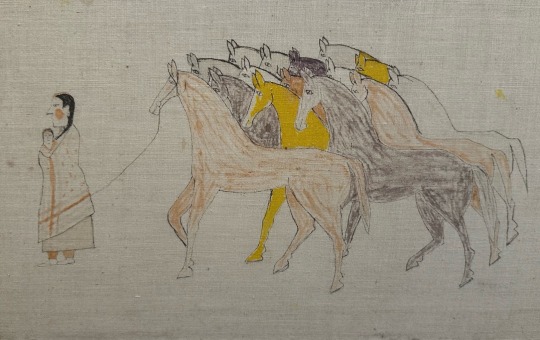
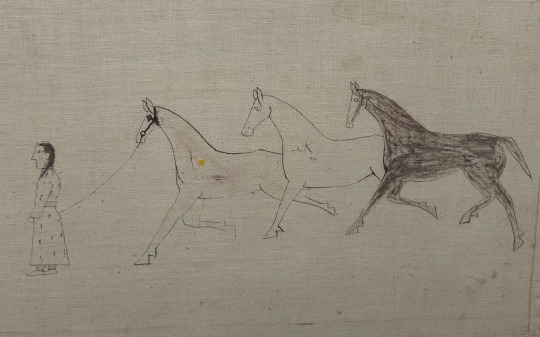
details from a pictorial muslin by an unknown artist, CA. 1890
hunkpapa lakota, northern plains
ink and colored ink on muslin
373 notes
·
View notes
Text

Native American Sioux Dakota Hunkpapa 1890 ... Hunkpapa Lakota (Hunkpapa Sioux) delegate Swift Dog wearing feather headdress and a bone breastplate. He is standing and holding a painted shield and ceremonial stick. - 1890
15 notes
·
View notes
Text
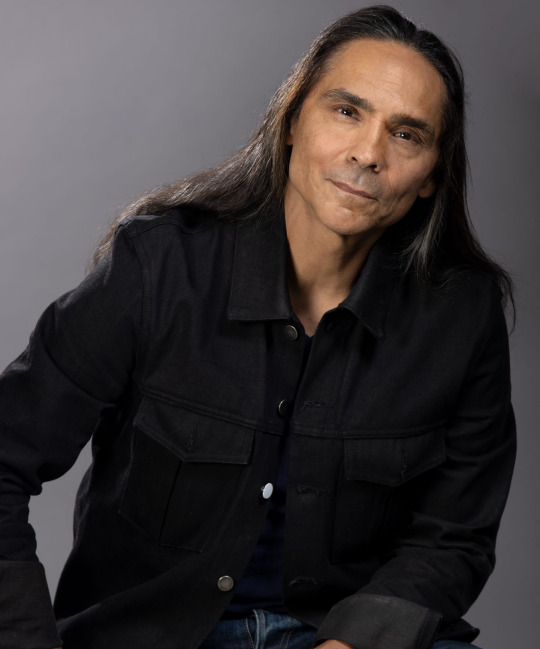
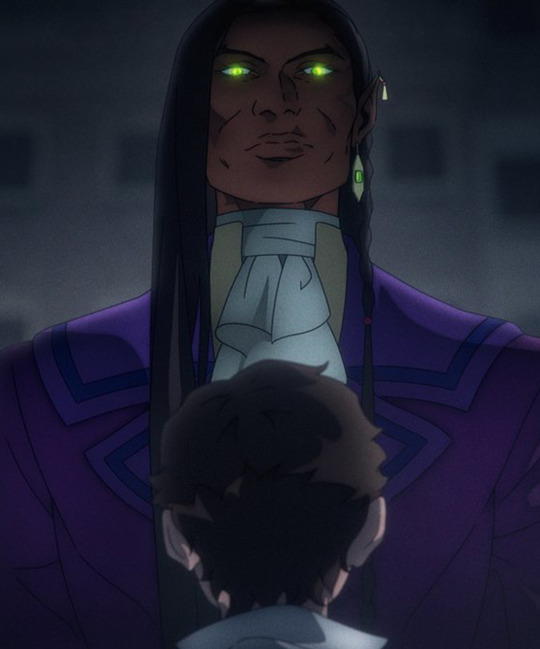
Zahn McClarnon (Westworld, Fargo, Reservation Dogs) will be voicing the vampire Olrox in Castlevania: Nocturne. He is of Hunkpapa Lakota and Irish descent
812 notes
·
View notes
Text

Tȟatȟáŋka Íyotake (Sitting Bull), a Hunkpapa Lakota chief and spiritual leader.
📷 Photograph of Sitting Bull by David Francis Barry, circa 1883
#Tȟatȟáŋka Íyotake#tathanka iyotake#sitting bull#hunkpapa lakota#lakota people#native american#indigenous#indigenous american
5 notes
·
View notes
Text
He héčhetu šni, thečhíȟila
“thewáȟila”
— “I love you” in Lakȟóta (via emilyvanawesome)
#this is an old post but I'm going through old business#hunkpapa lakota#ope that account doesn't even exist anymore
133 notes
·
View notes
Text


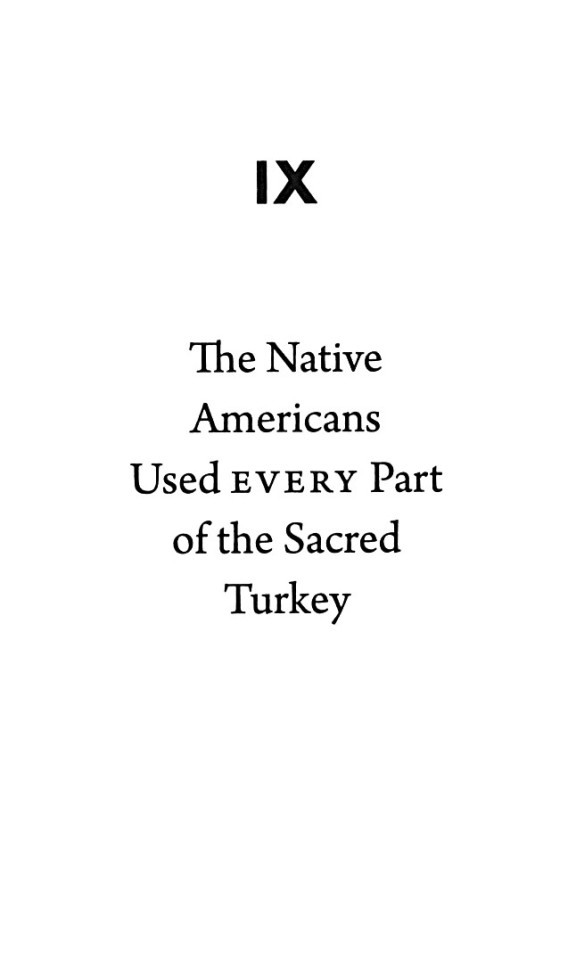
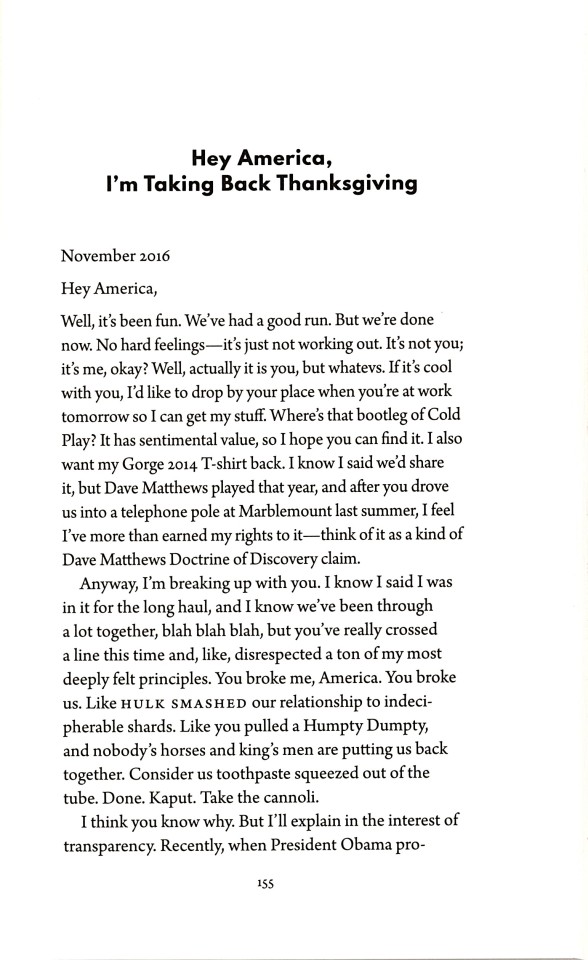


An Indigenous Thanksgiving
Here's a short list of titles for your holiday reading by three noted Indigenous writers: Kevin Loring (Nlaka'pamux; b. 1974); Tiffany Midge (Hunkpapa Lakota; b. 1965); Larissa FastHorse (Sicangu Lakota).
In Loring's play Thanks for Giving (Talonbooks, 2018), a mixed-family Thanksgiving dinner comes face to face with some unsolicited truths and sibling rivalry, where the old ways surrender to new possibilities, but the family's enduring spirit continues forward, ever fierce.
FastHorse's publication presents two of her plays The Thanksgiving Play (2017) and What Would Crazy Horse Do? (2014), published together by Theatre Communications Group in 2021. In The Thanksgiving Play, a group of well-intentioned white teaching artists scramble to create an ambitious "woke" Thanksgiving pageant that also celebrates Native American Heritage Month. Amidst their eagerness to put on the most culturally sensitive show possible, things quickly begin to devolve into the absurd. In What Would Crazy Horse Do?, Calvin and Journey--twins who are the last two members of Marahotah clan -- flounder after their grandfather's passing, and form a suicide pact in case their lives on the reservation become too hopeless.
Midge's Bury My Heart at Chuck E. Cheese's (University of Nebraska Press, 2019) is a compelling collection of the author's satirical musings on life, politics, and identity as a Native woman in America. We leave you with a snippet from Midge's Thanksgiving offering, "Hey America, I'm Taking Back Thanksgiving":
Hey America, Well, it's been fun. We've had a good run. But we're done now. No hard feelings -- it's just not working out. It's not you; it's me, okay? Well, actually it is you, but whatevs. . . . Anyway, I'm breaking up with you. . . . You broke me, America. You broke us. . . . I think you know why. . . . I'm taking back Thanksgiving. It was mine to begin with; you were just appropriating it to satisfy your need for some happy-go-lucky fairy tale in the midst of crimes against humanity. . . . No turkey for you. I'm taking it back. . . . No more cranberries, no more stuffing. And that roasted brussels sprouts dish your grandma makes, . . . I'm taking that too. . . . Don't Tweet me, don't message me. We're done. I hope you figure yourself out and someday get your life and your country together. Good luck. . . . P.S. I flirted with Canada behind your back, but they're not working out either, so don't even think of looking for me there. I've moved on.
While Midge has moved on, we haven't quite yet, and we wish you a pleasant Thanksgiving Day.
View posts from Thanksgivings past.
View other posts from our Native American Literature Collection.
#Thanksgiving#Thanksgiving Day#Indigenous authors#Indigenous writers#Native American authors#Native Americans#Indigenous#indigeneity#Kevin Loring#Tiffany Midge#Larissa FastHorse#plays#Indignous plays#Native American Literature Collection#Indigenous American Literature Collection
51 notes
·
View notes